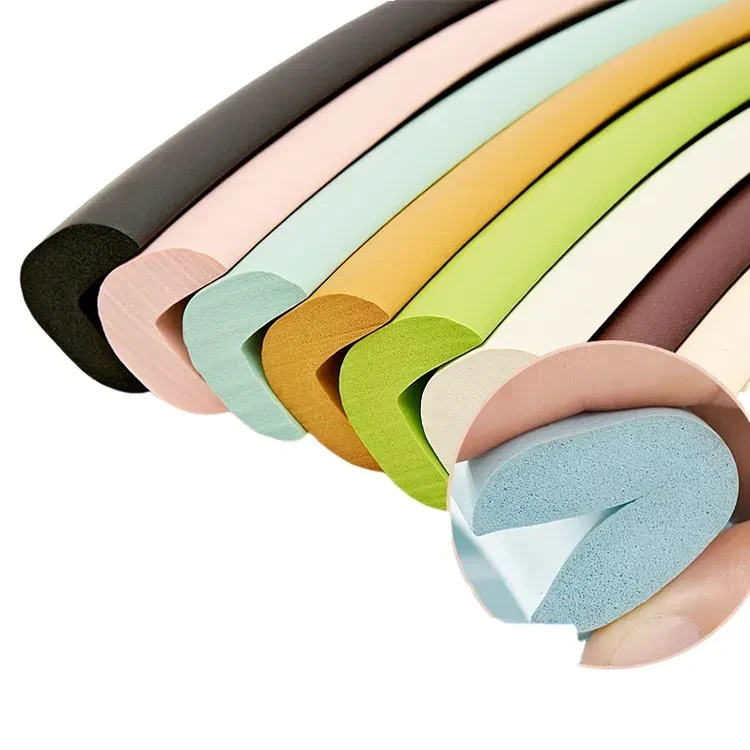vinyl door weather stripping
Understanding Vinyl Door Weather Stripping Benefits, Types, and Installation
In the quest for energy efficiency and home comfort, one often overlooked element is door weather stripping. Among the various materials available, vinyl door weather stripping has gained popularity for its durability, effectiveness, and ease of installation. This article will explore the benefits of vinyl weather stripping, the different types available, and provide a basic guide on how to install it.
Benefits of Vinyl Door Weather Stripping
1. Energy Efficiency Vinyl door weather stripping creates a seal around your doors, preventing drafts and reducing heat loss during colder months. This can lower your energy bills significantly as your heating or cooling system won’t have to work as hard to maintain the desired temperature.
2. Weather Resistance Vinyl is inherently resistant to moisture and can withstand temperature fluctuations. This quality makes it perfect for harsh weather conditions, whether it’s extreme heat or cold, rain, or snow.
3. Durability Unlike other materials, vinyl doesn’t warp, crack, or dry out over time. Its resilience ensures that it maintains its shape and effectiveness for years, providing long-term savings on replacement costs.
4. Easy Maintenance Vinyl weather stripping is easy to clean. A simple wipe with a damp cloth can keep it looking good and functioning well. This low-maintenance feature makes it ideal for busy homeowners.
5. Affordability Generally, vinyl weather stripping is more cost-effective compared to other materials like metal or rubber. This affordability, combined with its longevity, makes it a wise investment for homeowners looking to enhance their entryways.
Types of Vinyl Door Weather Stripping
1. V-Type Weather Stripping This type is commonly used for metal or wooden doors. It features a V shape that can flex and compress, creating a tight seal. It is particularly useful for gaps that change size during thermal expansion or contraction.
2. T-Slot Weather Stripping Designed for sliding doors or windows, this type fits into a T-shaped groove in the door frame. It provides an effective barrier against drafts and is easy to install.
vinyl door weather stripping

3. Pile Weather Stripping This type is made of a series of fibers that can compress, forming a dense barrier against outside air. It's often used for thresholds and is effective in sealing gaps under doors.
4. Rodent Resistant Weather Stripping For homeowners concerned about pests, this variety contains materials that deter rodents, ensuring that your home remains sealed not just from air but also from unwanted critters.
Installing Vinyl Door Weather Stripping
Installing vinyl weather stripping is a straightforward process, making it accessible for DIY enthusiasts. Here’s a simple step-by-step guide
1. Measure the Door Frame Before purchasing vinyl weather stripping, measure the height and width of your door frame to determine how much you’ll need.
2. Choose the Right Type Based on your door type and the size of the gaps, select the appropriate type of vinyl weather stripping.
3. Clean the Door Frame Ensure that the surface of the door frame is clean and free from dust and debris. A clean surface ensures good adhesion.
4. Cut the Weather Stripping to Length Using a utility knife, cut the vinyl weather stripping to fit the sides and top of the door frame. For doors with a threshold, measure and cut a piece for the bottom as well.
5. Attach the Weather Stripping Most vinyl weather stripping comes with adhesive backing. Simply peel off the backing and press it firmly onto the clean, dry surface of the door frame. For extra security, you can use nails or screws to ensure that it stays in place.
6. Test the Seal After installation, close the door to check for air leaks. If there are any gaps, make adjustments by tightening or repositioning the weather stripping.
In conclusion, vinyl door weather stripping is a practical solution to improve your home’s energy efficiency while protecting against the elements. With its variety of types and ease of installation, it stands out as one of the best choices for homeowners looking to enhance comfort and save on energy costs. Investing in quality weather stripping is a step towards a more efficient, comfortable home environment.
-
Under Door Draught Stopper: Essential ProtectionNewsJul.31,2025
-
Garage Door Seal and Weatherstrips for ProtectionNewsJul.31,2025
-
Edge Banding Tape for Perfect EdgesNewsJul.31,2025
-
Table Corner Guards and Wall Corner ProtectorsNewsJul.31,2025
-
Stair Nose Edging Trim and Tile Stair SolutionsNewsJul.31,2025
-
Truck Bed Rubber Mats for Pickup BedsNewsJul.31,2025
-
Window Weather Stripping for Noise ReductionNewsJul.29,2025